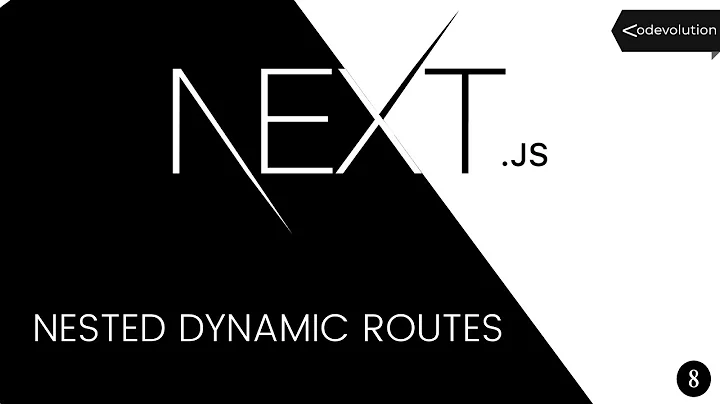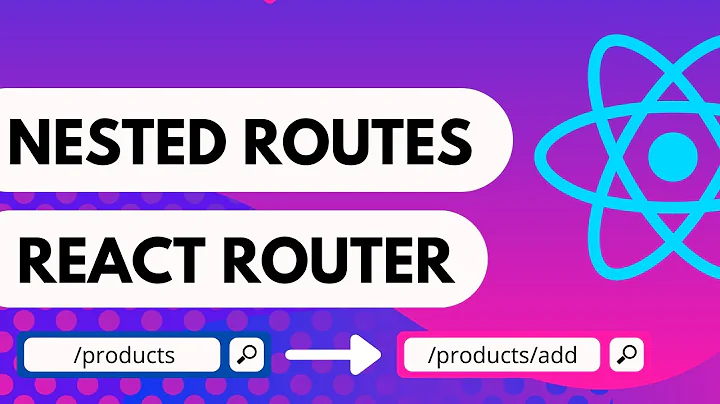RESTful API routes design: nested vs. non-nested
Solution 1
What happens if you want do drill down a couple more levels?
/api/addresses?departmentId=1&employeeId=2&addressId=3
vs
/api/departments/1/employees/2/addresses/3
The Address endpoint suddenly becames bloated with parameters.
Also, if you're looking at the Richardson Maturity Model level 3, RESTful APIs are meant to be discoverable through links. For example, from the top level, say /api/version(/1), you would discover there's a link to the departments. Here's how this could look in a tool like HAL Browser:
"api:department-query": {
"href": "http://apiname:port/api/departments?pageNumber={pageNumber}&pageSize={pageSize}&sort={sort}"
},
"api:department-by-id": {
"href": "http://apiname:port/api/departments?departmentId={departmentId}"
}
(either a query that might list them all, in a paged manner eventually, or a parameterized link that would go directly to a specific department, provided you know the id).
The advantage here would be that the client would only need to know the relationship (link) name, while the server would be mostly free to alter the relationship (and resource) url.
Solution 2
Old post, but not satisfactory answer for me.
It depends on your API. If your data is hierarchical and do not need to access resources without filtering them by their parents, then nested is OK (and not nested too).
If your ids are long (GUIDs), your hierarchy is deep, or you need to access any resource without filtering by its parents then not nested is a good option.
Try to have a unified interface and not having many ways for accessing the same resource.
Try this link that explains this a lot better: https://www.moesif.com/blog/technical/api-design/REST-API-Design-Best-Practices-for-Sub-and-Nested-Resources/
Related videos on Youtube
Ernesto
I'm a software developer and a technology enthusiast. I work developing software at Continuum Chile. You can find me as @gnapse in most online services. I'm a full-stack developer, fluent in Ruby on Rails on the backend and React+Redux and Ember in the frontend. I have a strong focus preference for modern dynamic languages, such as Ruby, Python, Javascript and Scala. I also enjoy a lot working in unix-like environments, and around the command line and Vim, two places where I feel increasingly at home.
Updated on April 01, 2021Comments
-
 Ernesto about 3 years
Ernesto about 3 yearsMy question is about the advantages of nesting resources when building URLs for API purposes. Consider the following two alternatives for accessing an employee resource:
/api/employees?department=1 # flat Vs. /api/departments/1/employees # nestedNow consider the task of developing a general purpose library to access REST resources from an API. If all routes were flat, such a REST wrapper library would only need to know the name of the resource being accessed:
store.query('employees', {department_id:1}) => /api/employees?department=1However, if we were to support nested routes, this wrapper would need to know extra information about what models are nested and under which other resource, in order to know how to build the URLs for referencing such a model. Given that not all models would be nested under the same parent resource, and even some models would not be nested at all, the REST wrapper library would need to have some sort of configuration describing all this extra knowledge that wouldn't be needed otherwise.
So my questions are:
Are there any real advantages to nested resource routes in an API? (Which is not meant to be consumed by end users, and therefore gains less from having prettier URLs).
Is the nested approach really better than flat, beyond aesthetics, so as to justify the extra effort and complexity introduced to support the lack of uniformity in resource URL building?
See also: https://stackoverflow.com/a/36410780/621809
UPDATE: IMPORTANT CLARIFICATION
I realize from some of the comments and answers, that I wasn't clear enough regarding one aspect: I'm not against addressing single resources with URLs like
/employees/5or/departments/1. I don't consider that to be nested.When I say nested resources, I refer to URLs like
/departments/1/employeeswhere a resource is addressed always within the context of another resource. The main issue is the fact that for URL building, a generic library would need to know extra stuff like "employees are nested under departments" but "branches are not nested under anything". If all resources could be addressed RESTfully, but in a flat fashion, it is simpler and more predictable to know how to address them.When you think about it, in databases you don't need to know extra information in order to know how to address a collection of objects (e.g. a table in a RDMS). You always refer to the collection of employees as
employees, not asdepartments/5/employees.-
Lucas Crawford almost 8 yearsI think of REST APIs as a way to access resources, and that way to access the resources should be as easy as possible. Pick which ever makes more sense for your application. I prefer the first option you listed, as it makes the most sense (and common). I'd use nested REST API URLs to drill-down on resources (i.e. /employees/{uid} or /departments/{uid}. There seems to be a bi-directional relationship between dpts. and employees, maybe also have an API that exposes dpts -> employee fetching. i.e. /departments?user.name=Ernesto. Of course, it all depends on how you are structuring the backend
-
 Ernesto almost 8 yearsLucas Crawford: see my clarification above regarding URLs like
Ernesto almost 8 yearsLucas Crawford: see my clarification above regarding URLs like/employees/{uid}. Those are not the ones I'm concerned about, because those do not fall under the definition of nested resources. -
Roman Vottner about 5 yearsA URI as a whole is a pointer to some resource, including any path, matrix or query parameters. You might think of the URI as a key used by (intermediary) caches to determine whether a representation is available for that key or not. By itself, a URI does not convey any parent-child relationship. So a URI like
/api/companies/123/users/456does not necessarily state that users is a subresource of companies. You might design your system however to exactly do this, but a client shouldn't rely on such a knowledge! Instead use link relations to hint clinets about the semantical context
-
 Ernesto almost 8 yearsThanks for your response. Just a follow up: what is exactly wrong with the flat version being "bloated with parameters"? Besides the use of the word "bloated", the fact that it has query string params is bad because...? In the end I think all objections boil down to "flat approach leads to uglier URLs". I'm trying to figure out if there's something beyond aesthetics.
Ernesto almost 8 yearsThanks for your response. Just a follow up: what is exactly wrong with the flat version being "bloated with parameters"? Besides the use of the word "bloated", the fact that it has query string params is bad because...? In the end I think all objections boil down to "flat approach leads to uglier URLs". I'm trying to figure out if there's something beyond aesthetics. -
 Ernesto almost 8 yearsThanks for your feedback. Could you elaborate on what checks can you make on the nested versions that you cannot do if going with the flat approach?
Ernesto almost 8 yearsThanks for your feedback. Could you elaborate on what checks can you make on the nested versions that you cannot do if going with the flat approach? -
 Ernesto almost 8 yearsAnd BTW, I think that even nested-approach proponents warn against too deep nesting like the example you put. Isn't it?
Ernesto almost 8 yearsAnd BTW, I think that even nested-approach proponents warn against too deep nesting like the example you put. Isn't it? -
 Alexandru Marculescu almost 8 yearsit's not about uglier URLs, which doesn't matter too much really, but what about inside your code? and it's also about exposing what is needed by the clients for your use cases, nothing more, nothing less; the first scenario also hase a more "SOAP" feel to it - just call method x (aka "departments"/"addresses") with y parameters, depending what you want (addresses for the whole department? employeeId is optional then)
Alexandru Marculescu almost 8 yearsit's not about uglier URLs, which doesn't matter too much really, but what about inside your code? and it's also about exposing what is needed by the clients for your use cases, nothing more, nothing less; the first scenario also hase a more "SOAP" feel to it - just call method x (aka "departments"/"addresses") with y parameters, depending what you want (addresses for the whole department? employeeId is optional then) -
 Ernesto almost 8 yearsThe main difference between SOAP and REST is that in SOAP URLs represented actions that one was executing when requesting them. Whereas in REST URLs must represent resources, that is nouns. I don't see how the flat version fails at addressing a noun. You would still do things like
Ernesto almost 8 yearsThe main difference between SOAP and REST is that in SOAP URLs represented actions that one was executing when requesting them. Whereas in REST URLs must represent resources, that is nouns. I don't see how the flat version fails at addressing a noun. You would still do things likePOST /employeesto create a new role, andGET /employees?department_id=5instead of/departments/5/employeesto retrieve the collection of employees on that department. -
 Ernesto almost 8 yearsHowever, nice point about the json responses including links to the associated data. We have been considering that, as I think it's the only alternative under which going nested makes sense. As you can see, my main concern is predictability on how to address resources. If base resources would include in their response information about how to address sub-resources, then fine. A client library would not then be concerned with URL building. We probably will go down that road.
Ernesto almost 8 yearsHowever, nice point about the json responses including links to the associated data. We have been considering that, as I think it's the only alternative under which going nested makes sense. As you can see, my main concern is predictability on how to address resources. If base resources would include in their response information about how to address sub-resources, then fine. A client library would not then be concerned with URL building. We probably will go down that road. -
 Ernesto almost 8 yearsAlso, after having read your answer in more detail, your example of
Ernesto almost 8 yearsAlso, after having read your answer in more detail, your example of/api/departments/1/employees/2/addresses/3would really be/addresses/3in my flat scheme. Not/api/addresses?departmentId=1&employeeId=2&addressId=3like you suggested. That's precisely my point. That you don't need the extra IDs to address the nested resource. -
Andy Dufresne almost 6 yearsOne biggest drawback of nested resources is that it could lead to returning incorrect data if the parent resource ids are incorrect/mismatch. Assuming there are no authorization issues, it is left upto the api implementation to verify that the nested resource is indeed a child of the parent resource that is passed. If this check is not coded for, the api response could be incorrect leading to corruption.











